Most of Buenos Aires National Wildlife Refuge sits high above the
desert and includes rolling hills of grassland across a vast plain. Before
settlers arrived, the landscape was wide open grasslands. Today the refuge is dotted with
mesquite trees that have spread through the valley over the past century due to
suppression of natural fires.
At the east side of the refuge are riparian areas along Arivaca Creek and Arivaca Cienega. Here there is a delightful mix of seasonally wet marshland and meadow, stately cottonwoods, and hackberry and mesquite groves. These wetlands are rare in the dry Southwest and are of tremendous value to wildlife. We went to the Cienaga Trail to celebrate my birthday, which happened while at BANWR. It was a wonderful and memorable birthday and a gorgeous hike. We could see why this area of the refuge brings birders from all around the globe to come and watch for birds that, due to climate and this riparian area, can only be found in this part of the world.
Below is a close-up of the Pima Pineapple Cactus.

 These photos were taken from either the office and visitor's center complex or from the 10-mile Pronghorn Drive loop.
These photos were taken from either the office and visitor's center complex or from the 10-mile Pronghorn Drive loop. Oliver really enjoyed being able to take long runs on the refuge grounds right from our home there.
From 1909-1985 five different ranching families owned Buenos Aires. The old fence below is near the Visitor's Center and is a reminder of the history of the refuge.
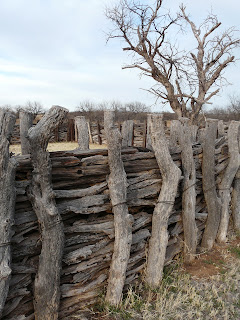
Above is the biology building, adjacent to the Visitor's Center , where we worked.

While we were at BANWR, Monica, the asst biologist on staff, had her last day. She will be going back to school to get her Master's Degree. She was a lot of fun to work with and was nice enough to invite us to her good-bye luncheon in the nearby town of Arivaca. We had a nice time visiting with everyone.

Buenos Aires was established for the reintroduction of masked bobwhite quail and to restore the natural landscapes and native wildlife that depend upon it. The refuge has a remote facility where the quail are studied, protected, bred, and prepared for life in the wild, on their own. We spent a day scanning at this facility.

Our workstation at the masked bobwhite quail facility.
Buenos Aires National Wildlife Refuge is 117,464 acres and was established in 1985. One of the reasons it was purchased by the FWS is because it was the largest areas of semiarid grasslands left in AZ. This makes it the only remaining suitable habitat in the US for the masked bobwhite quail which needs the mild climate and the open grasslands to survive. In addition to changing habitat, the quail just happens to be easy and tasty prey to many of the other animals that live on the refuge (like coyote). Although all attempts to-date to successfully release it into the wild have failed (open grasslands no longer dominate the refuge landscape), the refuge continues to seek out other safe havens for the bird and is working with ranchers and biologists in Mexico to restore the grasslands in Sonora where a few wild birds remain. We enjoyed meeting Ann (the weekend care-giver for the quails) and meeting these precious birds.
Above is the site of Monica's farewell lunch: the Sweet Pea Cafe.

Oliver scanning away! He had a nice view of the mountains from his workspace.
Dan and Oliver.
This is Bonnie. She is in charge of the Visitor's Center. She is also an incredible artist and stands in front of a mural of the refuge grounds that she painted herself. Many-a-visitor gets their photo taken in front of the mural, that is showcased in the VC.
Because Buenos Aires is on the border, it is a target pathway for illegals and drug smugglers trying to get into the US. On a given day, as many as 100 try to cross here. There are border patrol trucks, buses, and even a helicopter that are ever-present. If you look closely in the above photo, you can see the copter flying off in the distance of the VC. There is a landing pad and re-fueling station on the refuge grounds.
I crossed paths with this critter (a javelina) and his friend on a walk near the Sonoran Outpost on the refuge. He froze in the hopes that I would not see him. Instead I was able to take a few photos, then go along my merry way. He then took off to join his friend, who was long-gone.
We stayed in the "masked bobwhite" trailer in the Sonoran Outpost on the refuge. It was an area where there were other trailers for refuge staff and hook-ups for volunteer RVs. We were quite comfortable in this 2 BR model, complete with good WiFI!
The view from our patio.




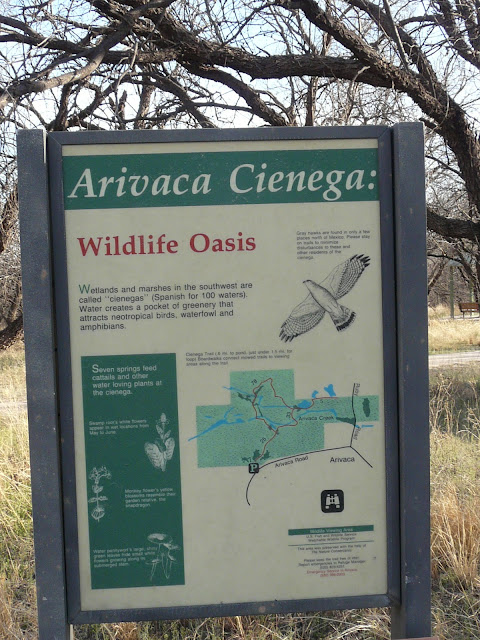








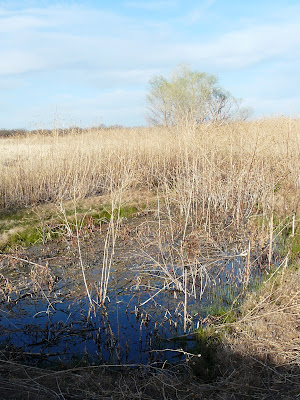
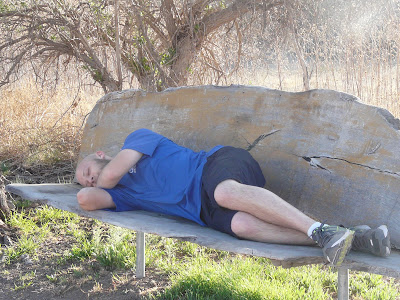









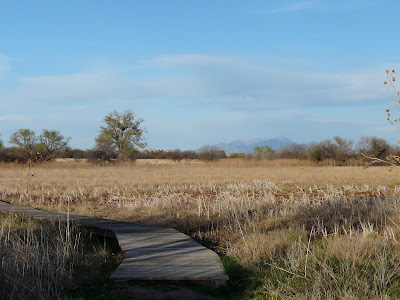














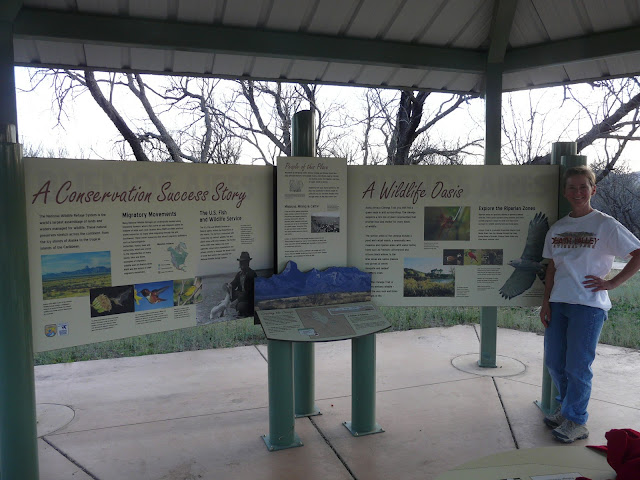


























































No comments:
Post a Comment